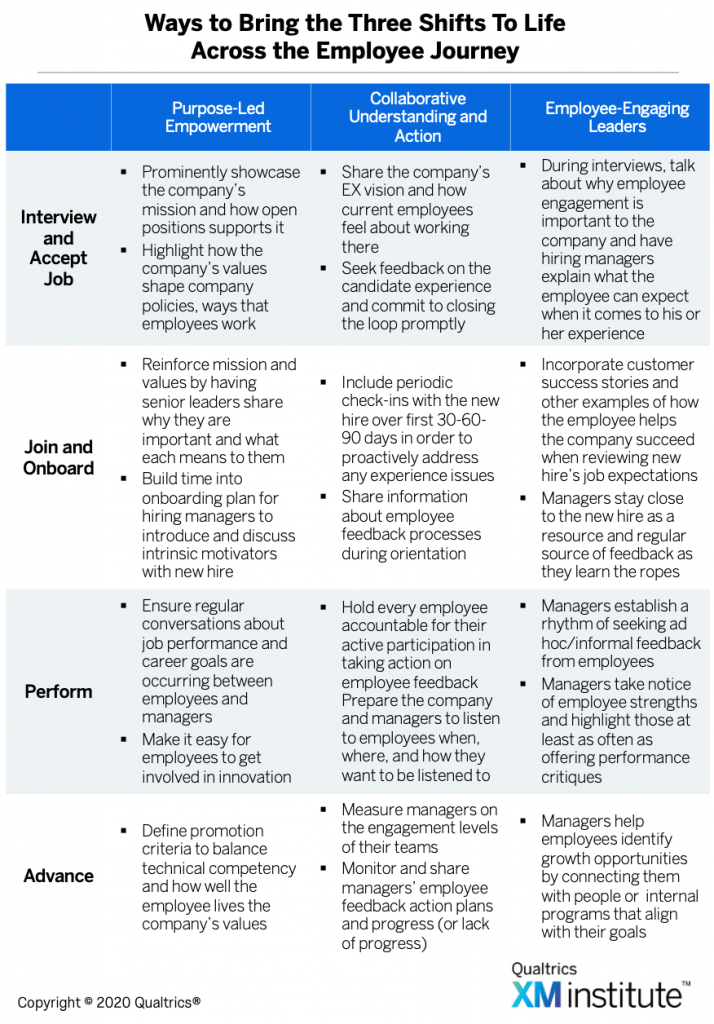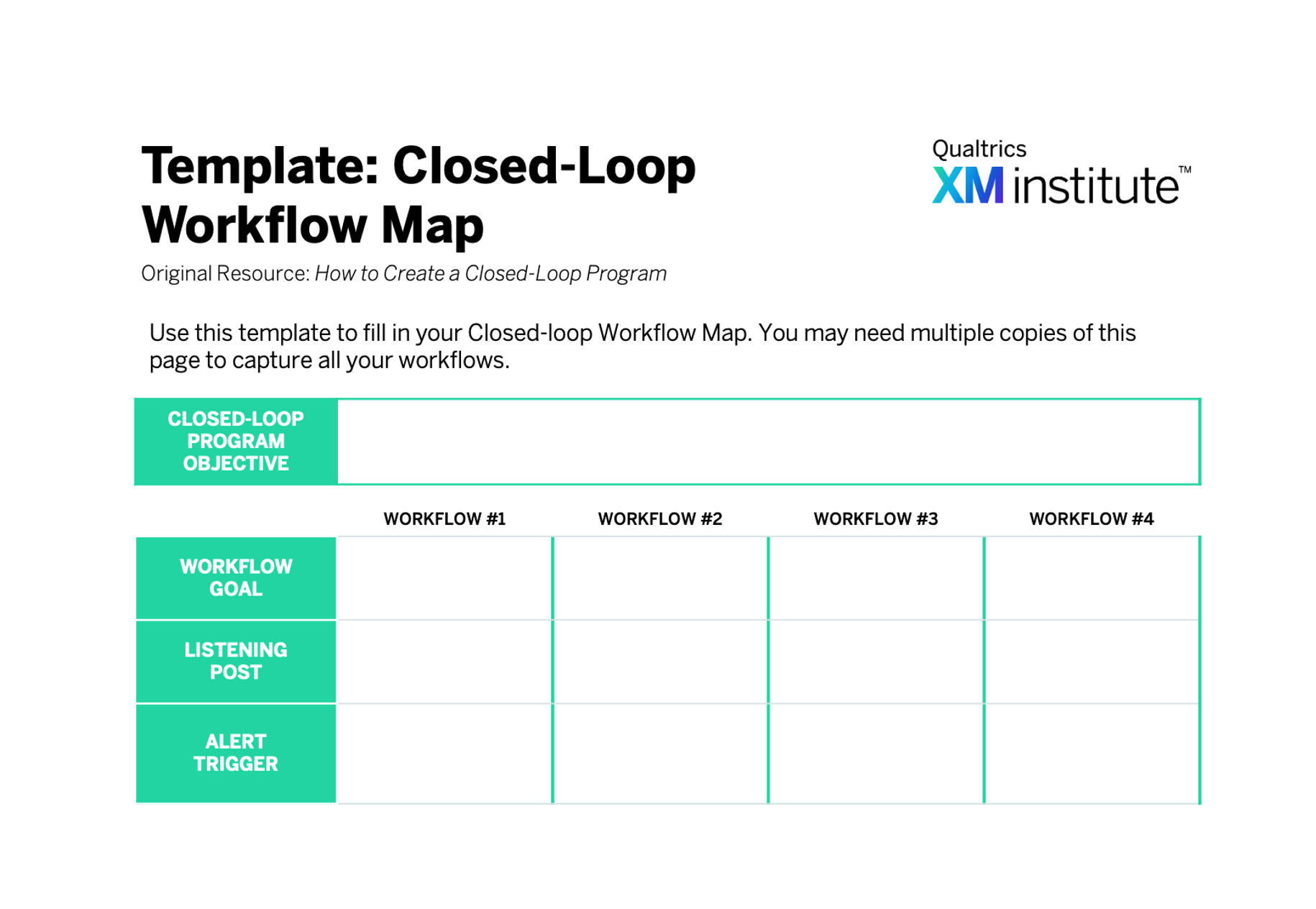Engaged employees make a big difference inside organizations because of the higher level of commitment and contribution they bring to their work. However, many organizations still struggle to manage employee experiences in a manner that results in engaged employees. In the XM Institute’s recent best practices report, Three Shifts for Employee Experience Success, I highlighted three ways companies should be adapting their mindsets and actions when it comes to delivering experiences that raise employee engagement. Those shifts are:
- From functional job execution to purpose-led empowerment. Rather than expecting uninspired compliance to narrow job descriptions, leaders must recognize empowered employees as a critical enabler of company strategy and success, and invest in strengthening the connection of employees to the mission of the company.
- From disinterested surveying to collaborative understanding and action. Companies must shift from periodically measuring and reporting on employee satisfaction or engagement to seeking out candid and actionable insights that enable conversations between managers and people across the moments that matter to them.
- From HR-driven programs to employee-engaging leaders. The individuals who lead people and teams must recognize the benefits of and be ready to fulfill their personal responsibilities to engage employees every day instead of relying on the periodic motions of HR programs.
All three of these shifts will help companies improve the effectiveness of their EX efforts. However, how an organization demonstrates or acts on those shifts can vary based on different stages of an employee’s journey. Here’s how the three shifts can positively impact experiences when put into action across four typical stages of an employee’s journey:
- Interview and accept job. In this stage, both the company and the candidate are assessing fit. When companies take a more purpose-led approach, prospective employees will get a more holistic sense of how the role fits within the company’s mission and how their individual success will be supported, not just the job description they are being hired to fill. Companies will get smarter in the process because they will proactively seek feedback, close the loop with candidates, and inject key learnings to improve the recruiting and hiring experience.
- Join and onboard. Once the company offers a job and the employee accepts, it’s time to set expectations and help the employee learn the ropes. Where traditional orientation programs concentrate on generic presentations of company information, adopting these shifts will result in a more personalized experience for the new employee. Because a new hire’s manager understands the experience starts with themself, the onboarding journey will include one-on-one time spent getting to know the employee and helping the employee get to know the company and its mission and culture, the team and their goals, and their new role as part of both. Periodic check-ins will ensure that while the new employee is learning the ropes, the company and manager are also learning about what’s working and jumping in when things are not quite on track.
- Perform. Employees will spend most of their time in this stage over the course of their careers. In this stage, companies need to consistently deliver on the experience they have promised employees. When the shifts are embraced, employees understand how they can personally control their experiences at work, while managers invest in reinforcing positive performance so that the employee and the company succeed. In this stage, processes that enable listening, learning, and getting better – from lifecycle surveys or multi-rater assessments to individual engagement reports or performance conversations – are highly valuable to the company and employees alike.
- Advance. In this stage, employees pursue and step into roles with greater responsibility, influence, and impact. Organizations that prioritize employee experience can be confident that those who advance not only are high in functional competence but also live the company’s mission and values every day. Because they’ve experienced it themselves, newly promoted managers readily act on the key beliefs that help them engage employees every day.

Bottom line: When you embrace the three shifts across all stages of employees’ journeys both the company and employees will benefit.





